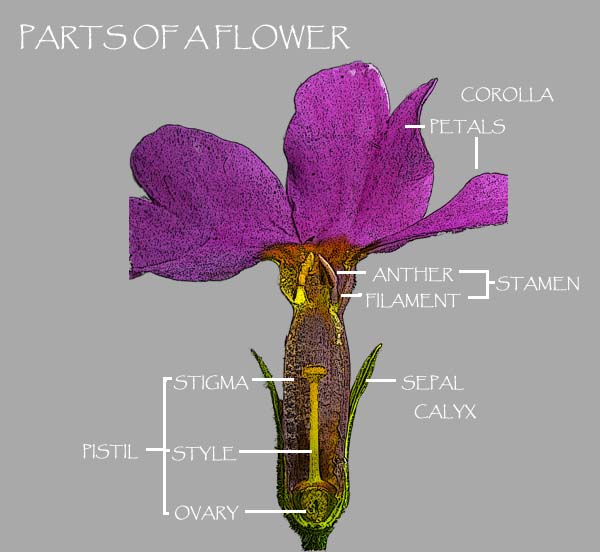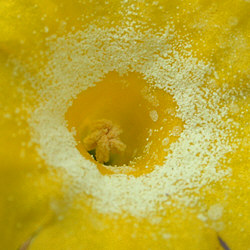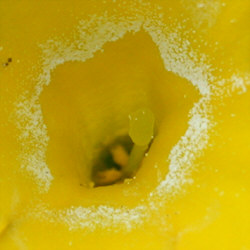Primulas have a number of features which are
useful in distinguishing between species. If you are trying to identify a primula that exhibits a rare feature,
then the number of possible species is reduced. Key features
include: style position, leaf vernation, flower
annulus, and farina.
First let's review the parts of a flower.

The petals are the colored part of the flower
which collectively make up the corolla. The anthers bear the pollen
and are supported by the stalk-like filament and together make up the
stamen. The pistil is collectively the stigma (pollen
receptor), style and ovary (where seeds form). The sepals are
modified leaves forming the calyx which protects the flower bud.
Primulas usually have 5 petals, 5 stamens and 5 sepals.

A feature of primulas is their heterostyly
nature. Almost all Primulas have a pin form (where the level of the stigma
is above the anthers) and a thrum form (where
the level of the stigma is below the anthers). The best seed set comes from cross pollination of
the two types. When planting out, group at least three or more seedlings to ensure you have both types
growing together to encourage seed production. Hand pollination can also be used to increase your seed
harvest.
This characteristic is useful in
identifying a species when the suspected species is a homostyle type.
This form has the anthers and stigma at the same level, and only occurs in
a few species.
|

|

|
|
Thrum flowered Primula auricula |
Pin flowered Primula auricula |